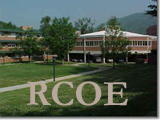Artifact # 2
Context:
As part of my graduate coursework, I tutored two students during my Practicum experience in the ASU Reading Clinic. I met with both students for any hour a day, two days a week. I planned tutoring sessions for each student depending on their reading levels, strengths, and weaknesses. We did a variety of work including word sort, guided reading, repeated readings, writing, and read alouds. The students varied in grade level, one being a sixth grader and the other a second grader. My sixth grade student was on a fifth grade instructional reading level. I mostly focused my tutoring sessions on fluency because he tended to read with many repetitions. We would partner-read a novel called Trouble River in which we finished over the semester. In some cases I would let him read silently, checking comprehension frequently. We also worked on repeated readings every session from this novel. He thoroughly enjoyed seeing how much he could improve with each timed trial. Graphing his progress was a great way for him to see his improvement over the semester. My second grade student started the semester reading on a late-first grade reading level and ended on a mid-second grade level. When tutoring this student, I focused my sessions on a very different level than my sixth grader. Our sessions focused on basal readers, word sorts, writing, easy reading, and read alouds. This particular child had no confidence in his reading. My main goal was to get him interested and excited about reading. He had a poor attitude about reading that reflected in his performance. I would make it a point to find stories or short books that were on topics that he liked and on a reading level that would not scare him away. When he would read material that was uninteresting or difficult, it deterred him from reading, causing his rate to fall as well as weaken his reading skills. As the semester went on, I could see his confidence rising and his attitude improving toward reading each week. I thoroughly enjoyed working with both students. I gained many learning experiences from these two young men to take with me throughout my career.
Impact:
The Practicum class was a great experience for me. I learned many ideas, theories, and skills necessary to teach reading to students that needed extra help in the reading field. I was able to identify each student's proficiencies and difficulties and choose accurate teaching strategies to meet their individual needs. I also learned how to efficiently tutor a child one-on-one, focusing on specific details that would be a model for their future in reading. I came out of the experience feeling more confident in teaching reading because I knew what I was looking for in each student and how to plan accordingly in order to help them effectively.
Alignment:
Principle A: Instructional Expertise
When participating in the ASU Reading clinic as a tutor for the Practicum graduate coursework, I demonstrated instructional expertise by applying the theoretical, philosophical, and research basses for educational practice to improve student learning. I designed and modified instruction and learning environments based on assessment of student learning problems and successes. I monitored the effects of instructional actions, selection of materials, and other instructional decisions on student's learning and behavior based on reading skills. I understood and linked subject matter and students' developmental and diverse needs in the context of school settings when tutoring students that are below grade level in reading.
Principle B: Knowledge of Learners
As a reading tutor, I incorporated knowledge of the nature of the learner, learning processes, variations in learning abilities and learning styles, and strategies for evaluating learning into planning, delivery, and evaluation of instruction during my tutoring lessons. I increased understanding of and respect of differences in students, including exceptionalities when planning lessons for the students. I designed and delivered instruction that was responsive to differences among all learners as well as reflected on and modified instruction to foster student learning. I understood and respected differences between the learning behaviors and outcomes expected in diverse communities. Finally, I created and maintained a classroom environment conducive to learning in which my students could feel welcome to be successful.
I used research to examine and improve instructional effectiveness and student achievement during my Practicum experience in the ASU Reading Clinic. I used student and school performance data to improve student learning, classroom processes, and school practices. I also investigated educational problems through action research when evaluating my students.
Principle E: Professional Development and Leadership
I engaged in continued professional development and provided leadership at the classroom, school, and community levels, as well as within the profession when participating in the reading Practicum. I was able to seek, evaluate, and act on input from educators, parents, students, and other members of the community for continuous improvement in my tutoring sessions. I participated, formally and informally, in appropriate professional communities, as well as, in collaborative leadership to address educational problems in the ASU Reading Clinic with my students.
